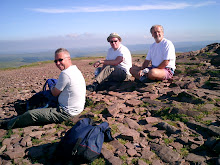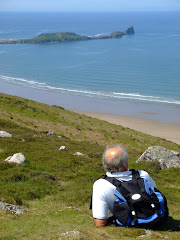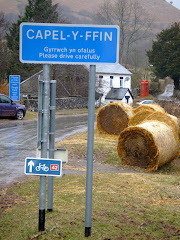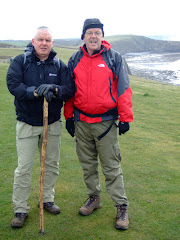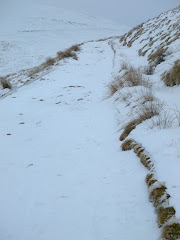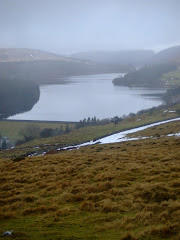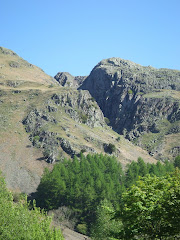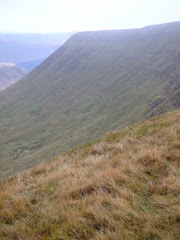(The Secret and Sacred Beacons by Brian S. Griffiths)
 Walking in the footsteps of the all conquering Romans is to sense the history of the hardship that must have been suffered to construct the 160 miles of this highway, which connects Aberconwy in the north to Carmarthen in the South. This particular section of Sarn Helen starts just north-west of Ystraffellte and runs northwards beneath Fan Frynych en route to the Roman fort of ‘Y Gaer’ in Brecon.
Walking in the footsteps of the all conquering Romans is to sense the history of the hardship that must have been suffered to construct the 160 miles of this highway, which connects Aberconwy in the north to Carmarthen in the South. This particular section of Sarn Helen starts just north-west of Ystraffellte and runs northwards beneath Fan Frynych en route to the Roman fort of ‘Y Gaer’ in Brecon. History now tells us that the Roman conquest of Wales began circa AD 50 and within half a century most of the "strategic" land, including coastal stretches and lowlands, were under Roman rule, a situation which lasted until AD 400 in spite of continual skirmishes with the feisty Celtic tribesmen.

Just as you join this section of Sarn Helen the OS map identifies the site of a Roman Fort although no physical evidence of this appears to remain visible. After about half a mile the surface shows signs of the original road laid by Roman engineers over two millennia ago. With sophisticated drainage channels built into the road, the outlines of the sandstone slabs remain clearly visible.
 After only a mile and a half a stone monolith, Maen Madoc, stands proudly alongside the road over eight feet high. The following Latin words are engraved on its side edge:
After only a mile and a half a stone monolith, Maen Madoc, stands proudly alongside the road over eight feet high. The following Latin words are engraved on its side edge: "DERVAC FILIUS IUST HIC IACIT"
Which is translated to: "DERVACUS, SON OF JUSTUS. HERE HE LIES."
Like the stone at Gelligaer Common, it is thought to mark a Christian burial (roadside graves being a feature of Roman burials). It is also not that far from the Maen Llia stone which lies about a mile to the north (We visited this a few months ago).
Though the stone is named after a Madog it is not clear who Madog was. One theory is that he was a local landowner. The base of the standing stone is surrounded by deeply embedded stones although previous excavation failed to reveal any sign of a burial.

Fan Nedd and Fan Llia provide a stunning backdrop as the walk passed Coed-Y-Garreg Farm. Leaving Sarn Helen at Duffryn Nedd the path starts quite well defined but soon disappears and this section of the walk did not appear to be used very often.

After a scramble through thick undergrowth you climb a stile and return to a path that leads south to eventually join a ‘C’ road by which you return to Ystraffellte, passing the New Inn which unfortunately was closed by late afternoon.

Near the end of the walk I met a very polite group of teenagers who had been hiking and camping in this region of the Welsh hills for the last few days as part of their Duke of Edinburgh Gold Award, soon afterwards the radio commentary confirmed that Eoin Morgan had scored the maiden century of his Test career against Pakistan in the First Test Match at Trent Bridge.
All of the photographs taken on this walk can be viewed here. Select 'slideshow' for automated viewing.

.jpg)






































